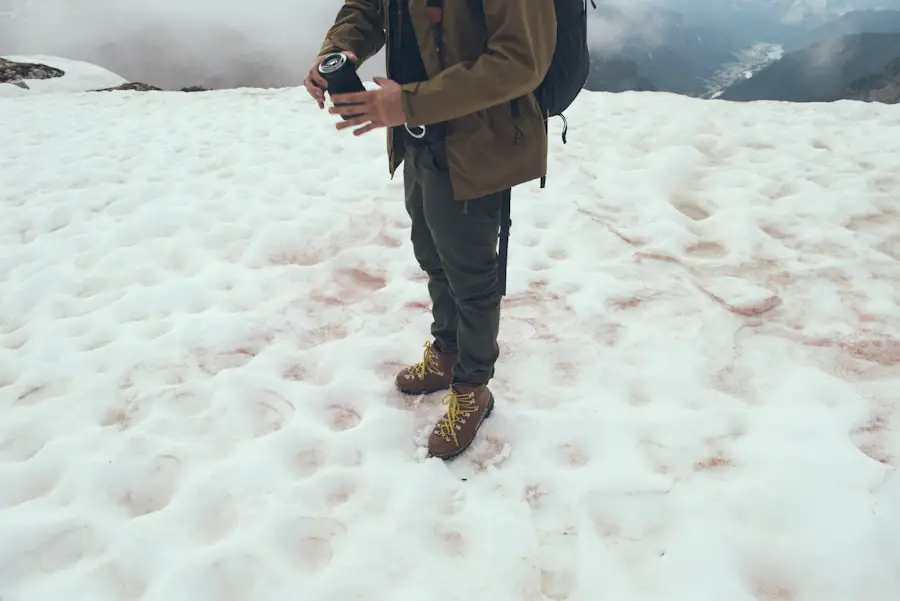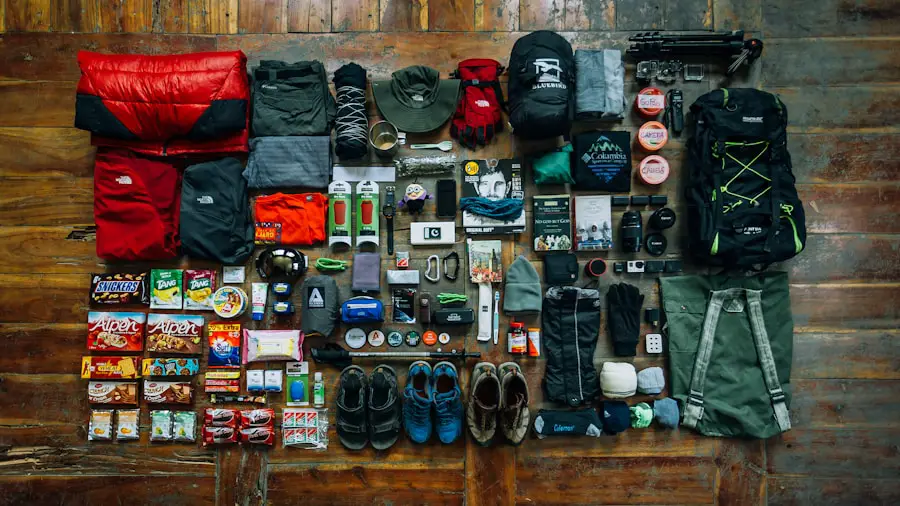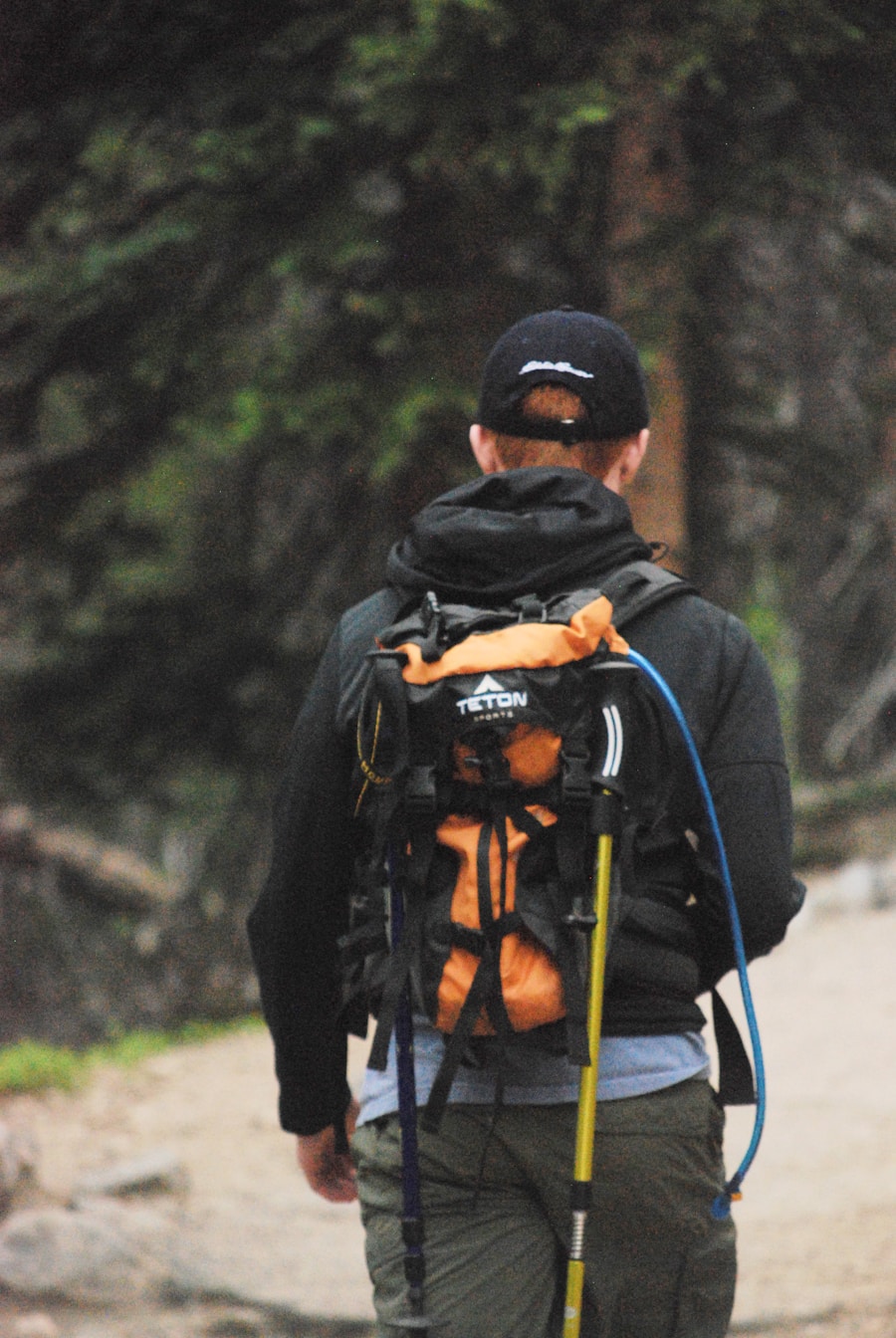When embarking on a hiking adventure, the significance of proper footwear cannot be overstated. The right shoes or boots serve as the foundation for a successful trek, providing not only comfort but also essential support and protection. Hiking involves traversing various terrains, from rocky paths to muddy trails, and the footwear must be equipped to handle these challenges.
A well-fitted pair of hiking boots or shoes can prevent blisters, reduce fatigue, and enhance overall stability. For instance, boots with ankle support are particularly beneficial for uneven ground, as they help to prevent sprains and other injuries. Moreover, the material and design of hiking footwear play a crucial role in performance.
Breathable fabrics can help regulate temperature and wick away moisture, keeping feet dry and comfortable during long hikes. Additionally, a good tread pattern on the sole is vital for traction, especially in wet or slippery conditions. For example, Vibram soles are renowned for their grip and durability, making them a popular choice among serious hikers.
Investing in high-quality footwear tailored to the specific demands of hiking can significantly enhance the experience, allowing hikers to focus on the beauty of nature rather than discomfort or pain.
Key Takeaways
- Proper footwear is crucial for hiking to prevent injuries and provide support for long treks.
- Choosing the right clothing for the trail involves considering weather conditions and layering for comfort and protection.
- Essential gear for carrying supplies includes a well-fitted backpack, water bottles, and a map or GPS device.
- Protecting yourself from the elements requires packing sunscreen, insect repellent, and a hat for sun protection.
- Navigational tools and safety equipment such as a compass, whistle, and flashlight are essential for staying safe on the trail.
Choosing the Right Clothing for the Trail
Layering System
The layering system is a widely recommended approach, allowing hikers to adapt to changing weather conditions throughout their journey. The base layer should consist of moisture-wicking materials that keep sweat away from the skin, ensuring comfort during physical exertion. Fabrics such as merino wool or synthetic blends are excellent choices for this layer, as they provide insulation while remaining lightweight.
Insulation and Climate
The middle layer serves as insulation and can vary depending on the climate. Fleece jackets or down vests are popular options that offer warmth without adding excessive bulk.
Weather Protection and Visibility
Finally, the outer layer should be weather-resistant, protecting against wind and rain. Waterproof jackets with breathable membranes, such as Gore-Tex, are ideal for unpredictable weather conditions. Additionally, it’s essential to consider the color and visibility of clothing; bright colors can enhance safety by making hikers more visible to others in the wilderness.
Essential Gear for Carrying Your Supplies

A well-organized backpack is an essential component of any hiking expedition. The choice of pack size depends on the length of the hike and the amount of gear required. Daypacks typically range from 15 to 30 liters, suitable for short hikes, while multi-day backpacks can hold 50 liters or more for extended trips.
When selecting a backpack, features such as padded shoulder straps, hip belts, and ventilation systems can greatly enhance comfort during long treks. In addition to size and comfort, the organization of gear within the backpack is crucial for efficiency on the trail. Compartments and pockets allow for easy access to frequently used items like snacks, maps, or first aid kits without having to rummage through the entire pack.
Hydration reservoirs or water bottle pockets are also important considerations; staying hydrated is vital during any hike. Some backpacks come equipped with built-in hydration systems that allow for hands-free drinking, which can be particularly advantageous during strenuous climbs.
Protecting Yourself from the Elements
| Element | Protection Method | Effectiveness |
|---|---|---|
| Sun | Applying sunscreen with SPF 30+ | Blocks 97% of UVB rays |
| Rain | Waterproof jacket or umbrella | Keeps body dry and warm |
| Wind | Wearing windproof clothing | Reduces wind chill and heat loss |
| Cold | Dressing in layers | Traps body heat and insulates |
Nature can be unpredictable, and protecting oneself from the elements is paramount for a safe hiking experience. Sun exposure is a significant concern, especially in open areas where UV rays can be intense. Wearing a wide-brimmed hat and sunglasses with UV protection can shield the face and eyes from harmful rays.
Additionally, applying sunscreen with a high SPF on exposed skin is essential to prevent sunburn and long-term skin damage. Rain and wind are other elements that hikers must prepare for. Waterproof gear is crucial in these conditions; however, it’s equally important to ensure that such gear is breathable to prevent overheating.
Layering techniques can help manage body temperature effectively while providing protection from rain and wind. Furthermore, understanding local weather patterns before heading out can aid in making informed decisions about what clothing and gear to bring along.
Navigational Tools and Safety Equipment
Navigating through unfamiliar terrain requires reliable tools and equipment to ensure safety and direction. Traditional maps and compasses remain invaluable resources for hikers who venture into remote areas where GPS signals may falter. Learning how to read topographic maps and use a compass effectively can provide hikers with a sense of confidence in their navigation skills.
In addition to maps and compasses, modern technology has introduced various navigational apps that can be downloaded onto smartphones or GPS devices. These applications often include features such as trail maps, elevation profiles, and even real-time weather updates. However, it’s crucial to have backup methods in case of battery failure or loss of signal.
Carrying a portable power bank can help keep devices charged throughout the hike. Safety equipment such as whistles, headlamps, and multi-tools should also be included in a hiker’s kit; these items can prove invaluable in emergencies.
Hydration and Nutrition for Hiking

Hydration Guidelines
A general guideline is to consume about half a liter of water per hour of moderate activity; however, this may vary based on individual needs and environmental conditions. Carrying a water filter or purification tablets can also be beneficial when hiking in areas with natural water sources.
Nutrition for Energy
Nutrition plays an equally important role in fueling a hiker’s body. High-energy snacks such as trail mix, energy bars, or jerky provide quick sources of fuel that are easy to carry and consume on the go.
Meal Planning for Longer Hikes
For longer hikes, packing lightweight meals that require minimal preparation—such as dehydrated meals—can help maintain energy levels without adding excessive weight to the backpack. Balancing carbohydrates, proteins, and fats in meals ensures sustained energy release throughout the hike.
First Aid Kit and Emergency Supplies
A well-stocked first aid kit is an essential item for any hiking trip, regardless of duration or difficulty level. Basic supplies should include adhesive bandages for minor cuts and scrapes, antiseptic wipes for cleaning wounds, gauze pads for larger injuries, and medical tape for securing dressings. Additionally, including items such as pain relievers (like ibuprofen), blister treatment supplies, and allergy medications can address common issues that may arise on the trail.
Beyond first aid supplies, it’s wise to carry emergency items that can assist in unexpected situations. A whistle can signal for help if lost or injured; a space blanket provides warmth in case of sudden weather changes or emergencies; and a fire starter can be crucial for warmth or signaling rescue teams. Familiarizing oneself with basic first aid techniques is equally important; knowing how to treat common injuries can make a significant difference in an emergency situation.
Additional Considerations for Different Types of Hiking Trails
Hiking trails vary widely in difficulty and environment, necessitating different preparations based on specific conditions. For instance, mountainous trails may require additional gear such as trekking poles for stability on steep inclines or declines. In contrast, flat trails may allow for lighter packs but still require attention to hydration and nutrition.
When hiking in desert environments, considerations shift towards heat management; lightweight clothing that covers skin can protect against sunburn while also keeping cool through evaporation. Conversely, when traversing snowy or icy trails, specialized gear such as crampons or snowshoes may be necessary to maintain traction and safety. Understanding the unique challenges posed by different types of trails allows hikers to tailor their gear and preparations accordingly, ensuring a safer and more enjoyable experience in nature’s diverse landscapes.
If you’re planning a hiking trip, it’s important to consider what to wear for the journey. Proper attire can make a significant difference in your comfort and safety while exploring the great outdoors. For more tips on essential gear for backpacking, check out this article on the best ultralight tent for backpacking. Having the right equipment, including a reliable tent, can enhance your hiking experience and ensure a successful adventure.
Love travel? Join Our Facebook Community
FAQs
What should I wear for hiking?
When going hiking, it’s important to wear moisture-wicking clothing to keep you dry and comfortable. This includes a moisture-wicking base layer, a breathable and lightweight shirt, and quick-drying pants or shorts.
What type of footwear is best for hiking?
For hiking, it’s best to wear sturdy and supportive hiking boots or shoes with good traction. Make sure they are comfortable and broken in before hitting the trails.
What accessories should I bring for hiking?
Some essential accessories for hiking include a hat for sun protection, sunglasses, sunscreen, a backpack to carry essentials, a map and compass or GPS, and plenty of water. Depending on the weather and terrain, you may also need a rain jacket, insect repellent, and a first aid kit.
What should I consider when choosing hiking clothing?
When choosing hiking clothing, consider the weather, terrain, and duration of your hike. Opt for moisture-wicking and breathable fabrics, and dress in layers to easily adjust to changing temperatures. It’s also important to wear clothing that provides sun protection and to avoid cotton, which retains moisture and can lead to chafing.
Are there any clothing items to avoid when hiking?
Avoid wearing cotton clothing when hiking, as it retains moisture and can lead to discomfort and chafing. Instead, opt for moisture-wicking and quick-drying fabrics. Additionally, avoid wearing clothing that is too tight or restrictive, as it can hinder your movement and cause discomfort during your hike.
